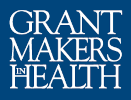Children and Integrative Medicine
On this webinar, Dr. Kathi J. Kemper, chair of the Center for Integrative Medicine at the Wake Forest University School of Medicine, and director of the Center for Integrative Medicine at Wake Forest University Baptist Medical Center, discussed the intersection of children and integrative medicine treatments.
Race to the Top: Is Children’s Health in the Running?
The Race to the Top-Early Learning Challenge (RTTELC), jointly administered by the U.S. Departments of Education, and Health and Human Services, is the latest federal opportunity for states to receive grants to transform education systems and improve achievement outcomes for children.
Covering Children Under the Affordable Care Act: Minding the Gaps
While millions of children and their families stand to gain access to affordable coverage through the Affordable Care Act, a significant subset of children is vulnerable to being excluded. Nearly 20 million children live in nontraditional family arrangements that potentially create barriers to accessing health coverage.
Shedding Light on Maternal Mortality
This Issue Focus discusses maternal mortality in the United States, its rising rate in recent years, and key disparities in the rate based on race/ethnicity and class. It will also offer strategies and examples for funders to improve and promote the health of women and children before, during, and after pregnancy and childbirth.
Health Care Reform: Promises and Pitfalls for Maternal and Child Health
In 2009 health care spending in the United States reached an all-time high of nearly $2.5 trillion, representing an almost two-fold increase in spending on a per capita basis since 1997 (NIHCM Foundation 2011).
A Health Spending Cap: Implications for Medicaid, CHIP, & ACA Implementation
On this call, Robert Greenstein, President of the Center on Budget and Policy Priorities, discussed the various budget plans before Congress, and their possible impact on Medicaid and other social programs.
Connecting Kids to Coverage
State Medicaid programs and CHIP play a crucial role in providing coverage for low- and moderate-income children. Together, they provide access to preventive and primary care services to over one-third of all children and nearly 60 percent of low-income children.
Child and Adolescent Health and Health Care Quality: Measuring What Matters
On this call, funders heard about IOM’s recommendations to standardize and make improvements to data sources and measures of health and health care quality for children and adolescents.
Paying (Overdue) Attention to Bullying Prevention
Bullying is not a natural part of growing up; it is a painful and preventable experience in the lives of many children and youth. Approximately 30 percent of children and youth have bullied or have been bullied.
